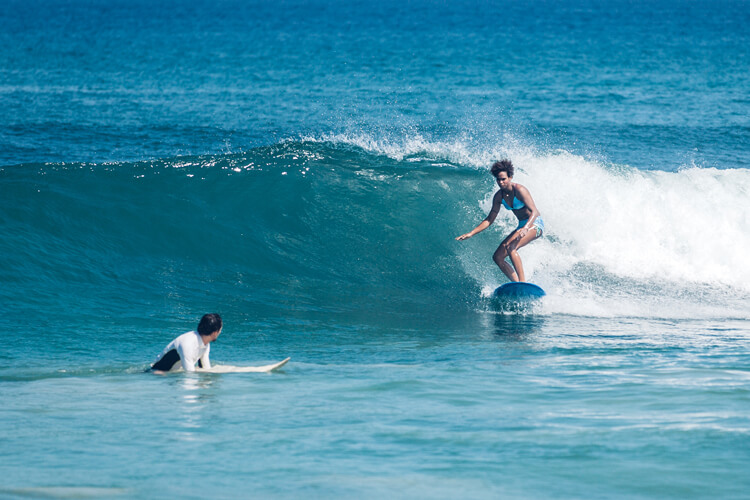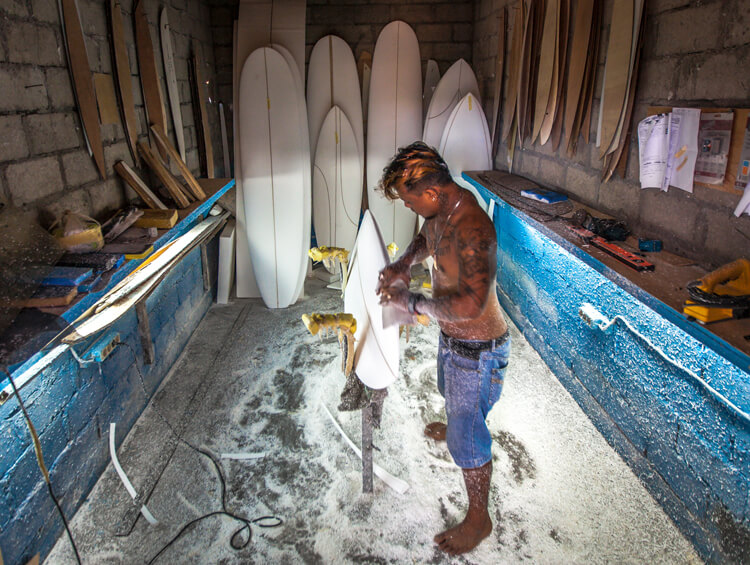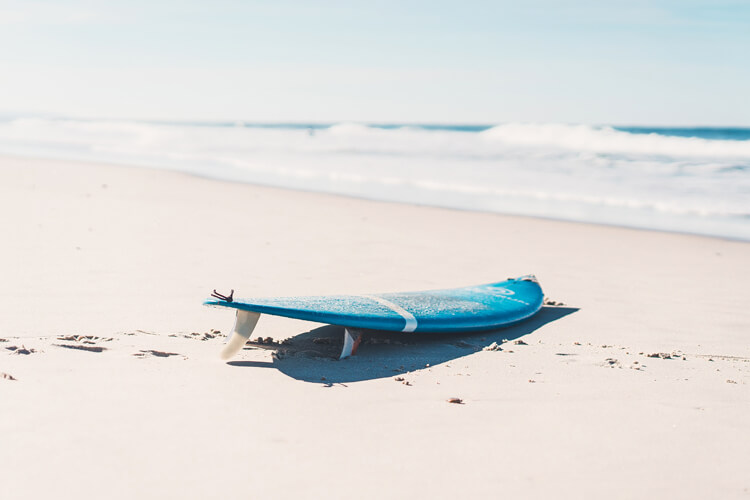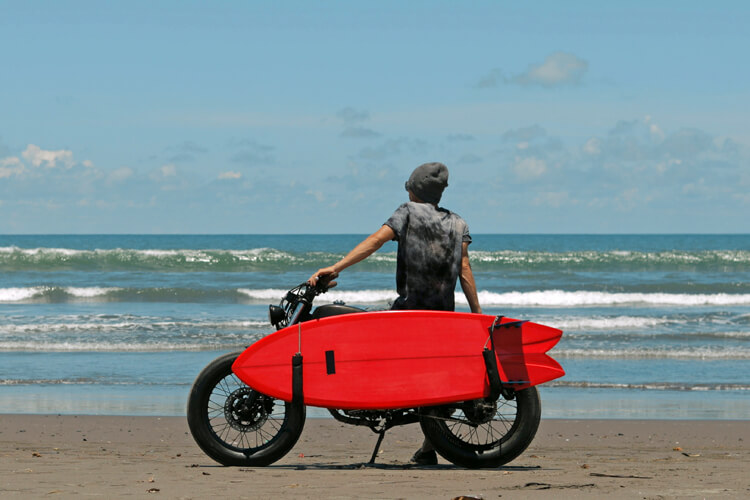The concept of surfboard volume has become one of the most popular variables in the decision-making process of buying boards.
The notion of board volume is not new in water sports, though. Windsurfing manufacturers were the first to introduce it.
Back in the day, they started using it to identify the boards' size and catalog them within the sport's different disciplines - wave, slalom, freestyle, etc.
But what exactly is volume, and how does it apply to surfing?
Volume is the amount of three-dimensional space enclosed by a surfboard expressed in liters.
Submerging a 30-liter surfboard or any object in water will displace 30 liters of water. It's a pretty simple concept and formula.
In the 21st century, with the advent of computer-aided design (CAD) in surfboard shaping, it became possible to create a board with a specific volume in liters.
Today, the files generated by CAD are loaded into CNC shaping machines, which then cut out the blank's primary layers to the desired volume.
In the pre-CAD era, surfboard shapers had to mentally design the right board for a specific surfer and type of wave.
So, in less than a decade, the surfboard volume calculator became a practical tool for putting a figure on a surfer's ideal board size.

Liters Vs. Surfboard Design
For many, volume is a marketing stunt to sell surfboards online.
The newly created surfboard design variable is often accused of being a general reference that only addresses one of surfing's many moments: paddling for a wave.
However, as with anything in life, rules of thumb could be misleading and frequently generate mistakes and errors.
And you don't need to look any further to find a self-explanatory example.
If you can ride a skimboard, which is a wide and thin sheet of fiber, on a huge wave, how do you explain the relevance of surfboard volume to a surf shop customer?
Bob McTavish is one of the most famous surfboard shapers on the planet, with thousands of longboards and shortboards built under his label.
The Australian craftsman believes surfers are too obsessed with volume when other variables play a more critical role in performance.
"A lot of people ask me about volume. They think they've got to match their body weight to a certain volume," McTavish once stated.
"The Archimedes' principle says that you've got to have something underwater to displace water and create buoyancy. Buoyancy is the result of submersing mass."
"So, if you put extra inches on the deck, it's doing zero. It's giving you volume, but it's not floating you. It's got to be submerged to float you."
McTavish thinks surfers should focus on other aspects of surfboard design - for instance, width, rocker, and concaves.
"You've got to have a wider board to float you better than a narrow one because you add inches that submerge."
"So, thickness is not necessarily the answer to flotation."
"The most efficient rockers will flow the water under the board and bring it back to the surface as you pass through."
"Double concaves will get you up on top of the water as soon as you start moving the board - and that's when volume disappears."
"Once you're up and planing, volume is not an issue at all. It's only water in displacement mode paddling to catch a wave."

How to Read Surfboard Volume
Is the surfboard volume calculator a useless, ineffective, and incorrect tool? Should we discard the data generated by this spreadsheet?
No, we can use it as an indication, reference, or term of comparison.
And that is particularly true when an experienced surfer is buying a third, fourth, fifth, or sixth surfboard. He or she already knows what works and what doesn't.
It's a shorthand way - a checksum that is great to confirm if the length, width, thickness, rocker, rails, nose, tail, and fin setup of a board are generally correct.
But we must address it with caution and always in conjunction with other surfboard design variables.
Why? Because keeping the top of the surfboard level with the water is pretty much useless in itself.
In other words, the trade-off between buoyancy, stability, and planing speed involves several factors that should be added to the overall equation.

Paddling Isn't Surfing Isn't Paddling
Relying exclusively on surfboard volume can lead to really surreal results.
An experienced surfer will notice that some things don't make sense, even if the surfboard volume math looks right for his/her weight, experience, and age.
Here are two examples of how volume-obsessed calculations can result in incorrect choices.
A surfer will struggle to paddle into a big wave and ride it on a wide and thick shortboard with plenty of volume.
It won't work - the surfer will need paddling and planing surface.
Simultaneously, a beginner surfer will not learn to surf on small waves using a gun.
So, how can all variables, including volume, be nicely balanced?
From a surfer's perspective, buying a new surfboard means looking at two factors - body mass and experience level (and eventually age).
In other words, the buyer has to answer two questions: How much do I weigh? Am I a beginner, intermediate, or advanced surfer?
When buying a surfboard, it is also essential to know what type of waves you're planning to ride. Mushy summer rollers, regular chest-high waves, or winter closeouts?
Ideally, surfers should visit surf shops with a wide range of boards so that the process of selecting the ideal plank results in a rational purchase.
A well-stocked surf shop is always the go-to store for buying new surfboards and even second-hand boards.
An experienced salesperson can help surfers choose the right board.
In conclusion, the surfboard volume calculator is far from being a perfect and reliable decision-making tool and should never be isolated from other design factors.
It could be a starting point for ordering a custom-shaped surfboard, but it is a very subjective variable that needs to be addressed cautiously and never isolated.
